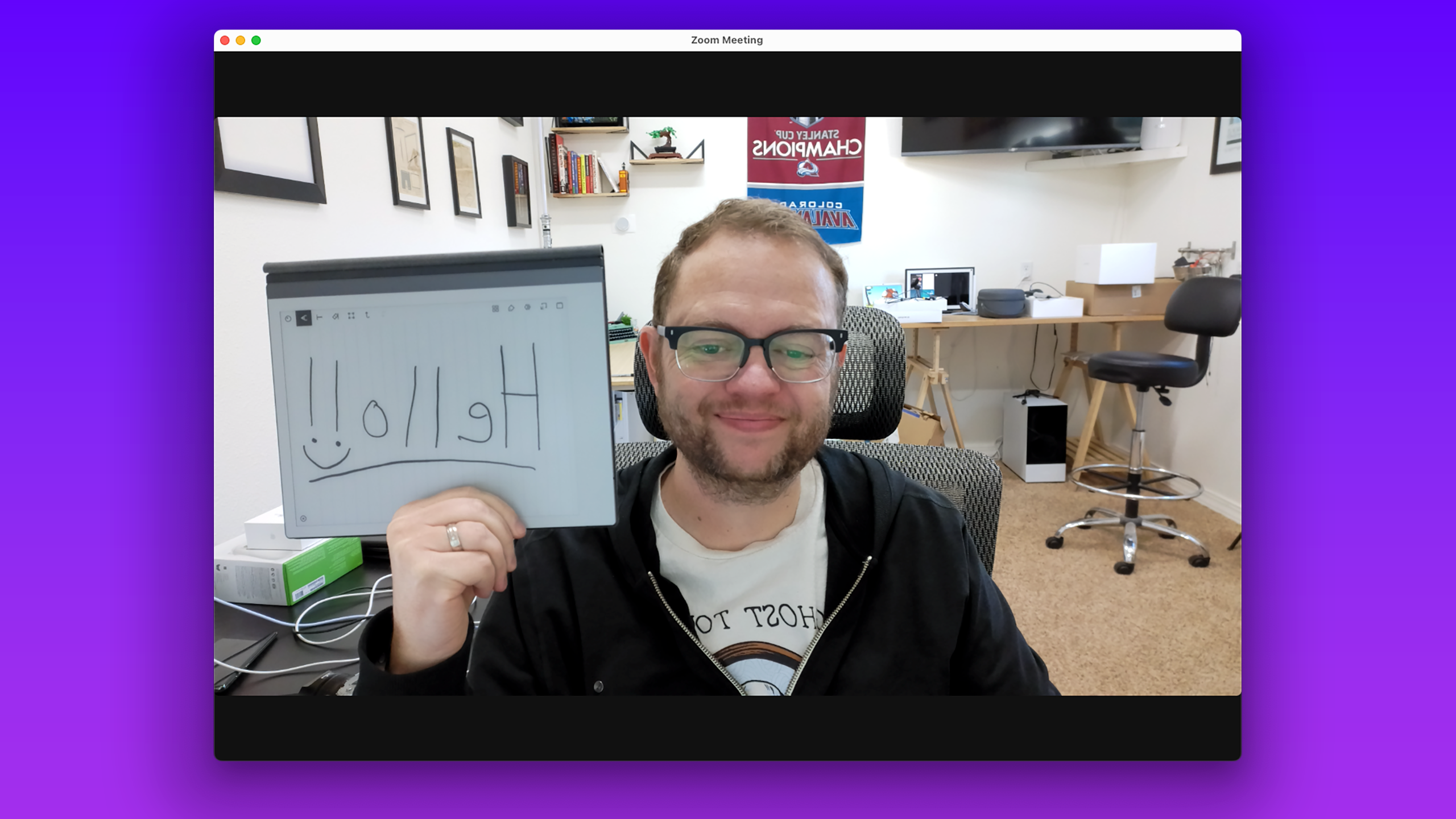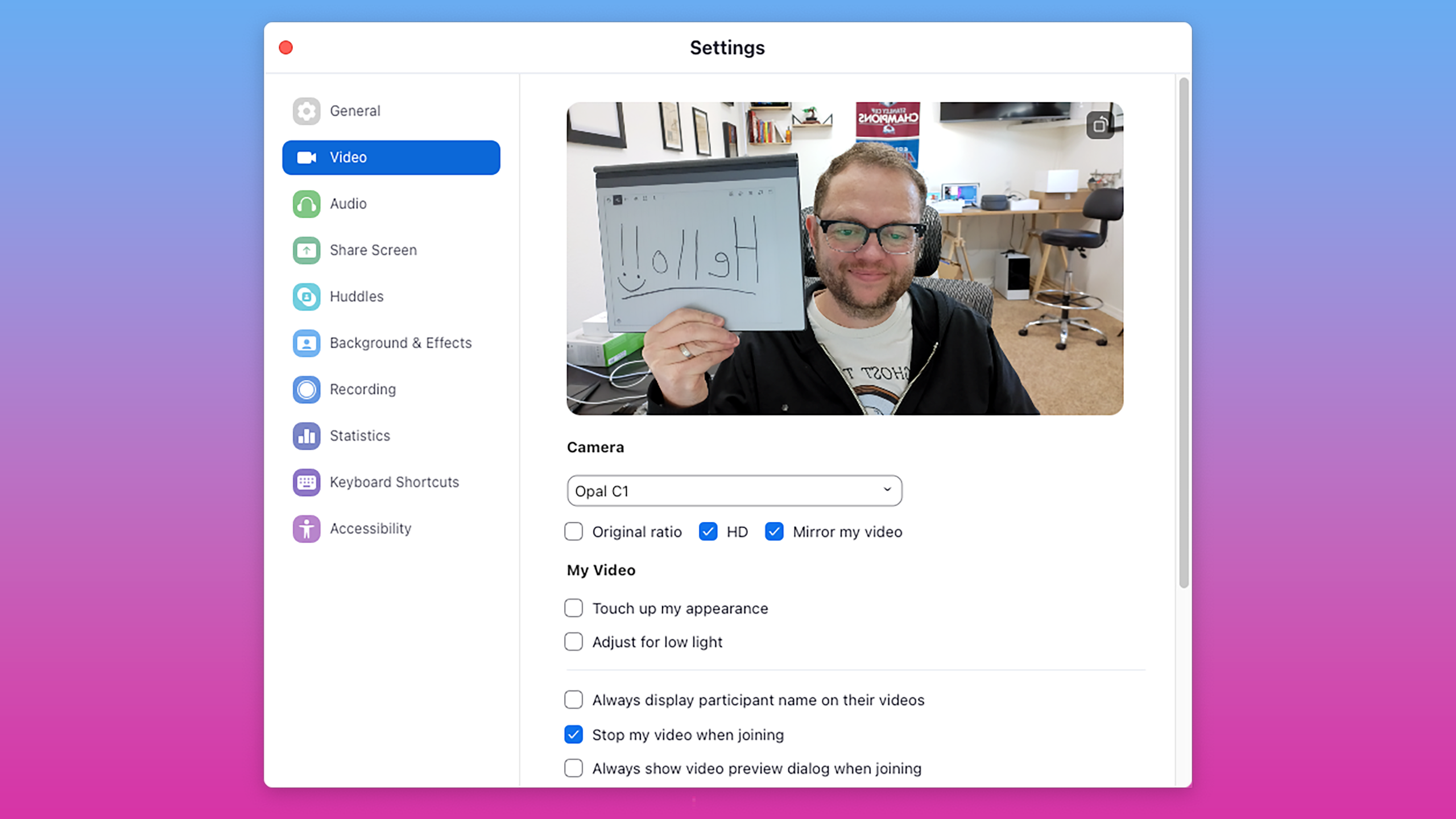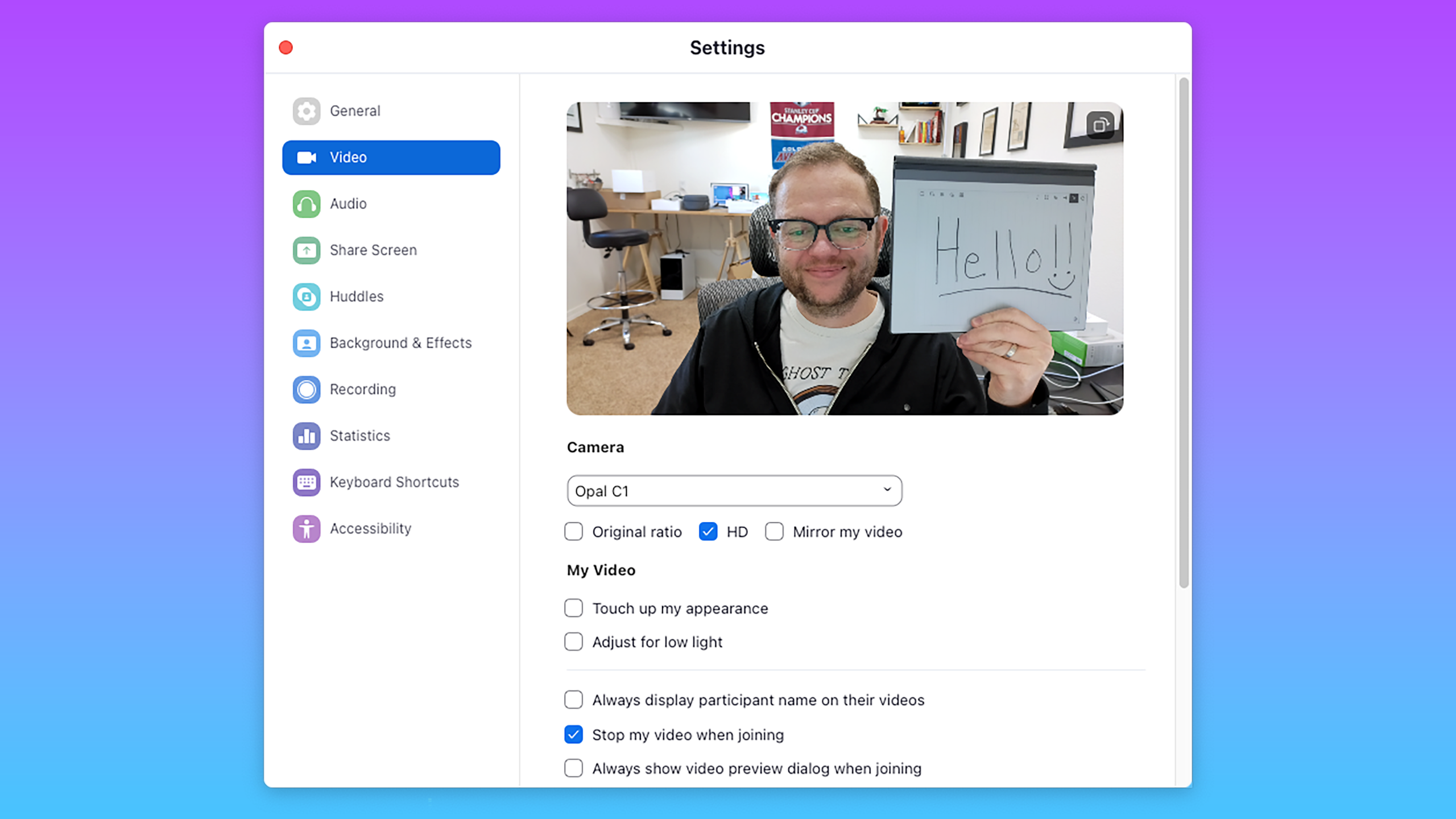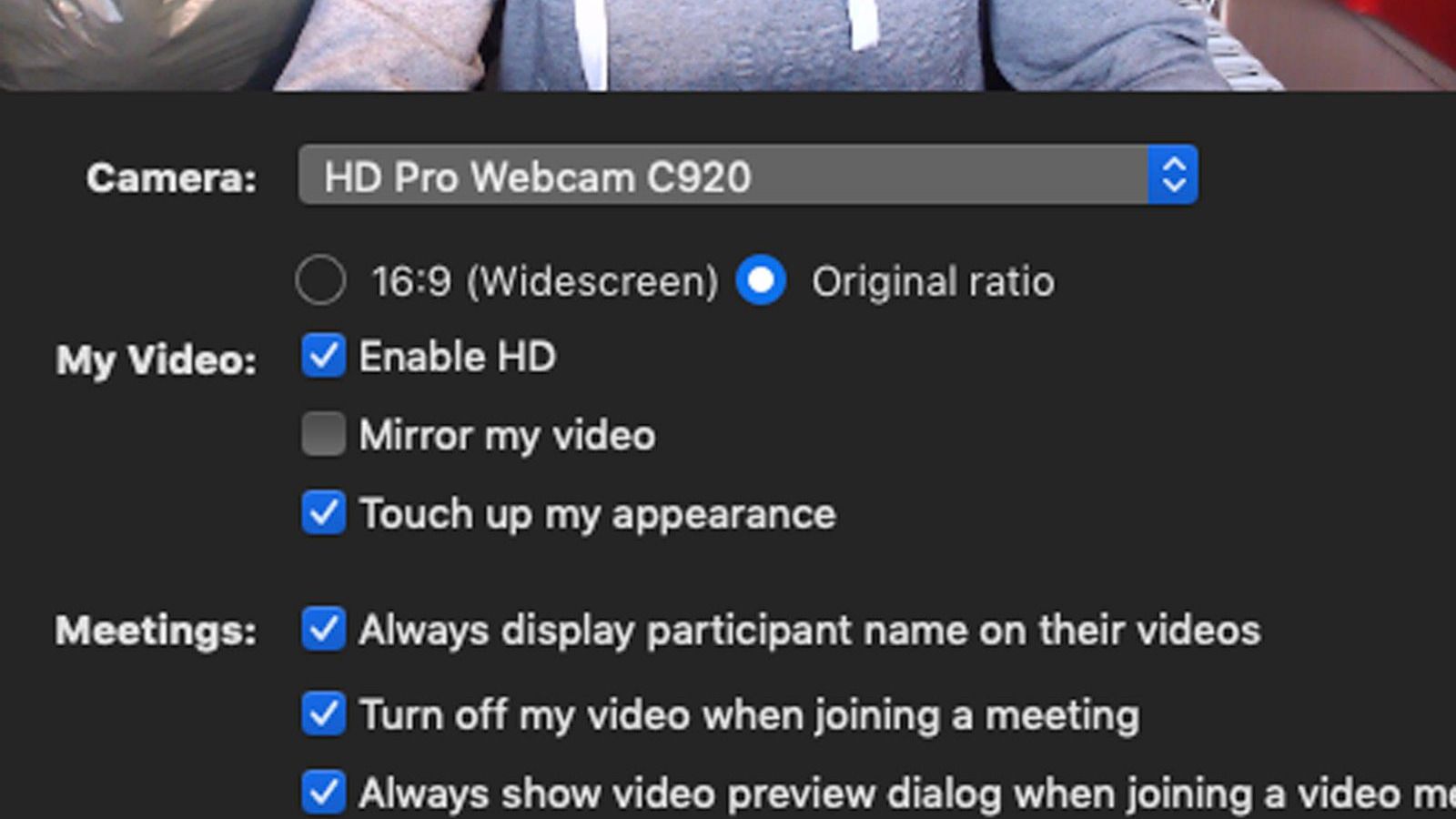Key Takeaways
- Your mirrored image on Zoom's preview screen isn't actually what others see -- your text will look fine to them.
- Mirroring in video calls aids in natural interactions by showing you an image you're accustomed to seeing.
- Zoom allows you to turn off mirroring in video settings, making it easier for online tutors and frequent presenters.
Video calls and conferences are now a permanent part of most of our work weeks. Many of us enjoy working remotely, or in hybrid settings where not all the staff are going to be in the same building at the same time. Zoom has been the go-to video calling program for most thanks to its ease of use, yet there's one odd issue that plagues people to this day.
For whatever reason, Zoom likes to take your camera and flip it so you appear mirrored to everyone you're talking to when you look at yourself in the little preview screen. This can be rather annoying, especially if you need to show off something with writing to an audience. Thankfully, this issue is far less of a problem than you might think.
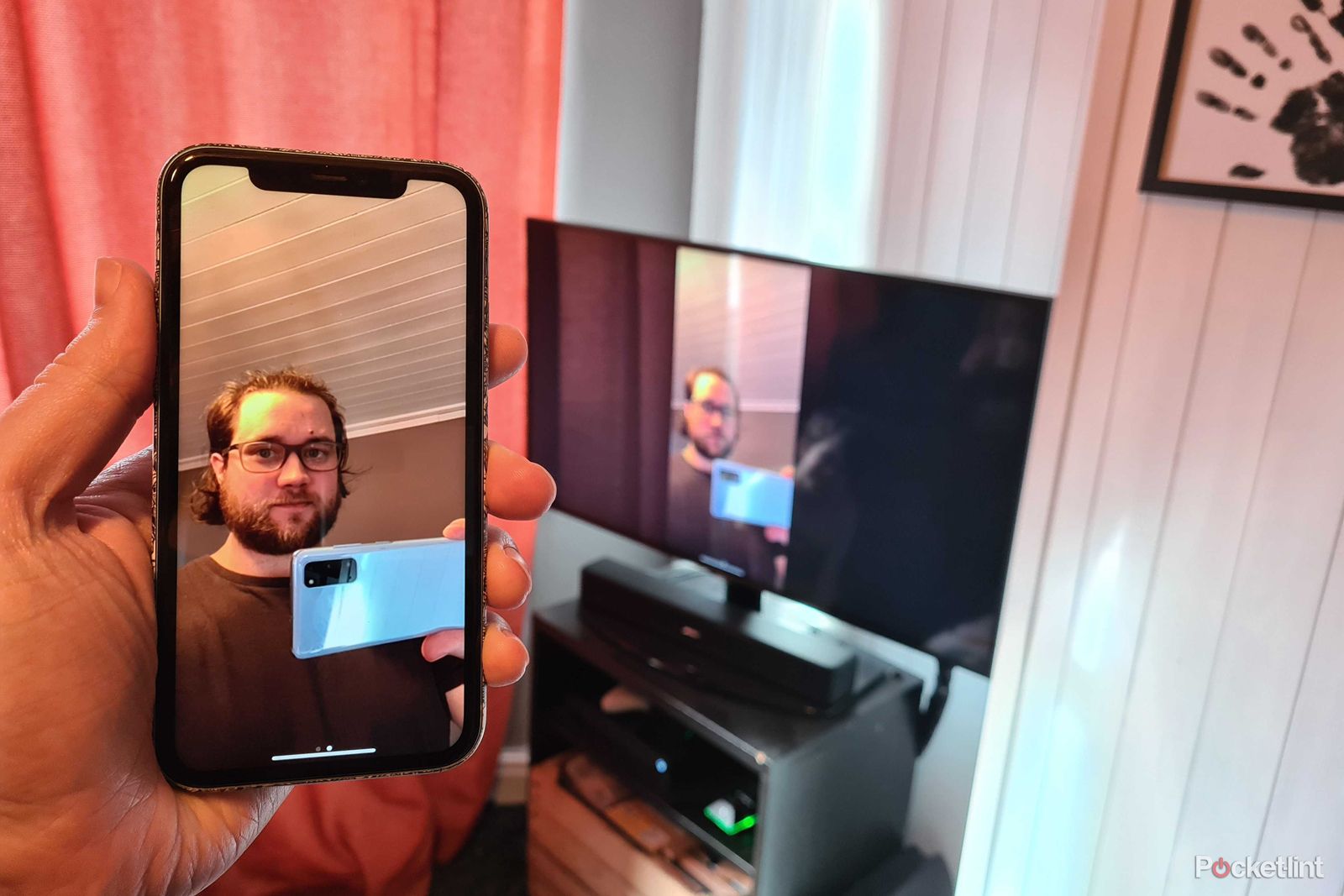
How to use Zoom on a TV: Stream your meetings to the big screen
Tired of squinting at your phone or your laptop? Take those Zoom calls in comfort and style on your TV.Why is my Zoom backward?
It's all about mirroring
There's no need to panic because your video isn't actually backward. When people on the other end of the call see you, you appear exactly as you should. That means all text is the right way around for them. In essence, to fix this issue, you don't have to do anything at all, because it's only the preview of yourself in the video that you see that appears the wrong way around.
This is because mirroring is turned on by default when using Zoom and other services. You can test this by reaching out to shake hands with yourself -- mirroring will show both you and your video image reaching out with the same hand. That's how you know mirroring is on. It's also mirrored in Teams, Skype, and Google Meet too.
Don't panic. Your text looks normal to everyone.
The good news is that if you're displaying text through the camera -- perhaps showing something you've written -- mirroring means that it looks backward to you while appearing normal to everyone else in the video conference. Just avoid writing anything backward, because then it will indeed be backward.
Zoom, Skype, Teams, and Google Meet all present you with this mirrored view, but everything appears exactly as it should to the viewers. So, don't change anything, don't write things backward, don't print things backward -- instead, stop worrying about it, as you'll only tie yourself in knots.
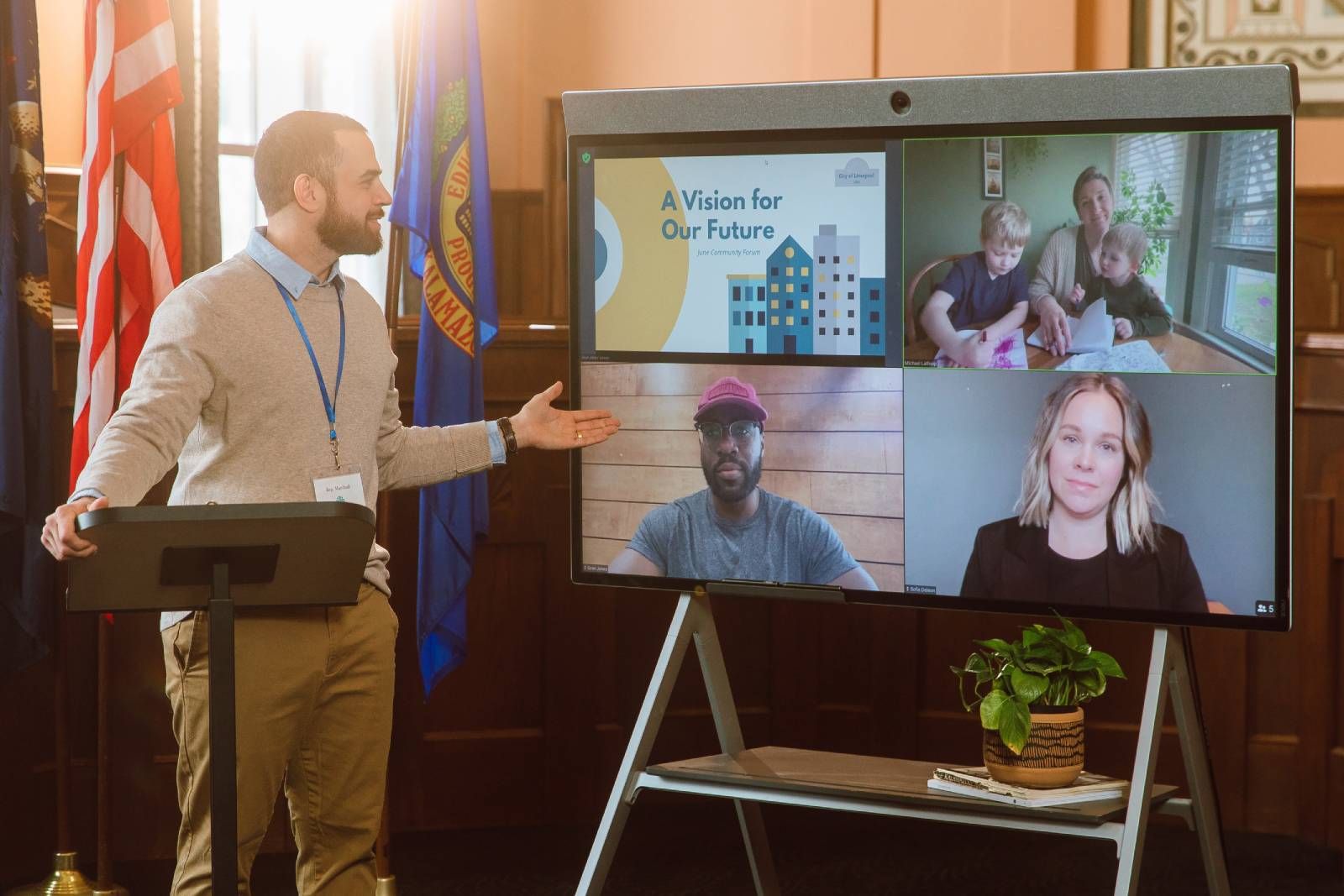
What is Zoom and how does it work? Plus tips and tricks
If you work from home, you've probably heard about Zoom, one of the leading video conferencing software apps on the market.How to turn off mirroring in Zoom
Back to normal
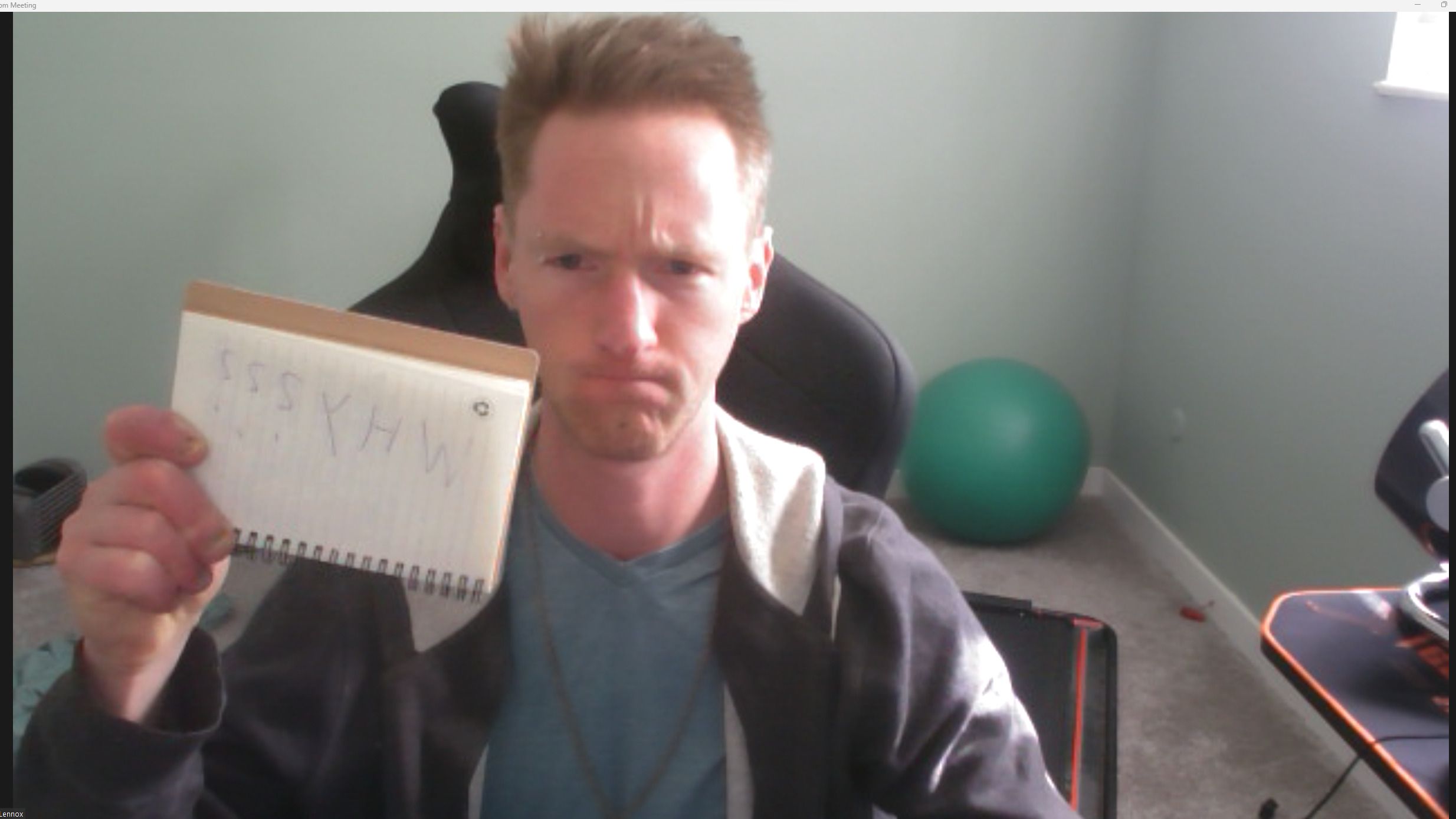
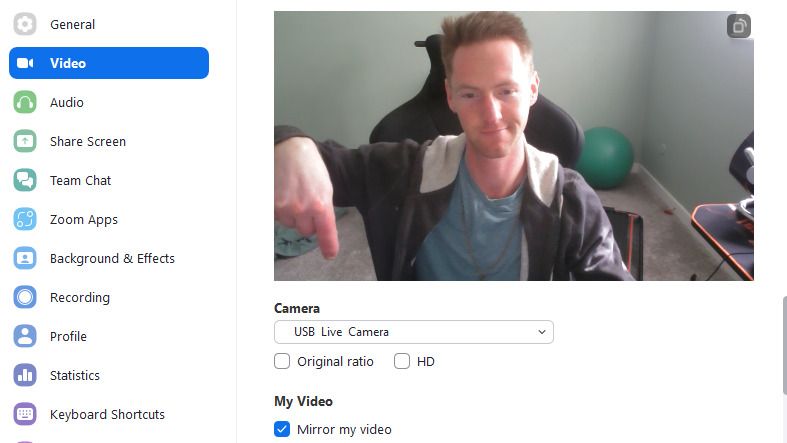
Zoom is currently the only platform that allows you to turn off mirroring. If you find it too confusing -- perhaps if you spend a lot of time presenting text, like an online tutor -- then you can turn off mirroring in the video settings.
Here's how to do it:
- Open the Zoom app and tap the settings icon.
- Click on video settings - this will open a preview of your video.
- Click on "mirror my video" and see which view works best for you.
You can only do this on the desktop app. Yu can do it on the mobile app, although you'll still appear mirrored in the mobile app. If you're using Zoom in the browser (which we wouldn't recommend), the video isn't mirrored.
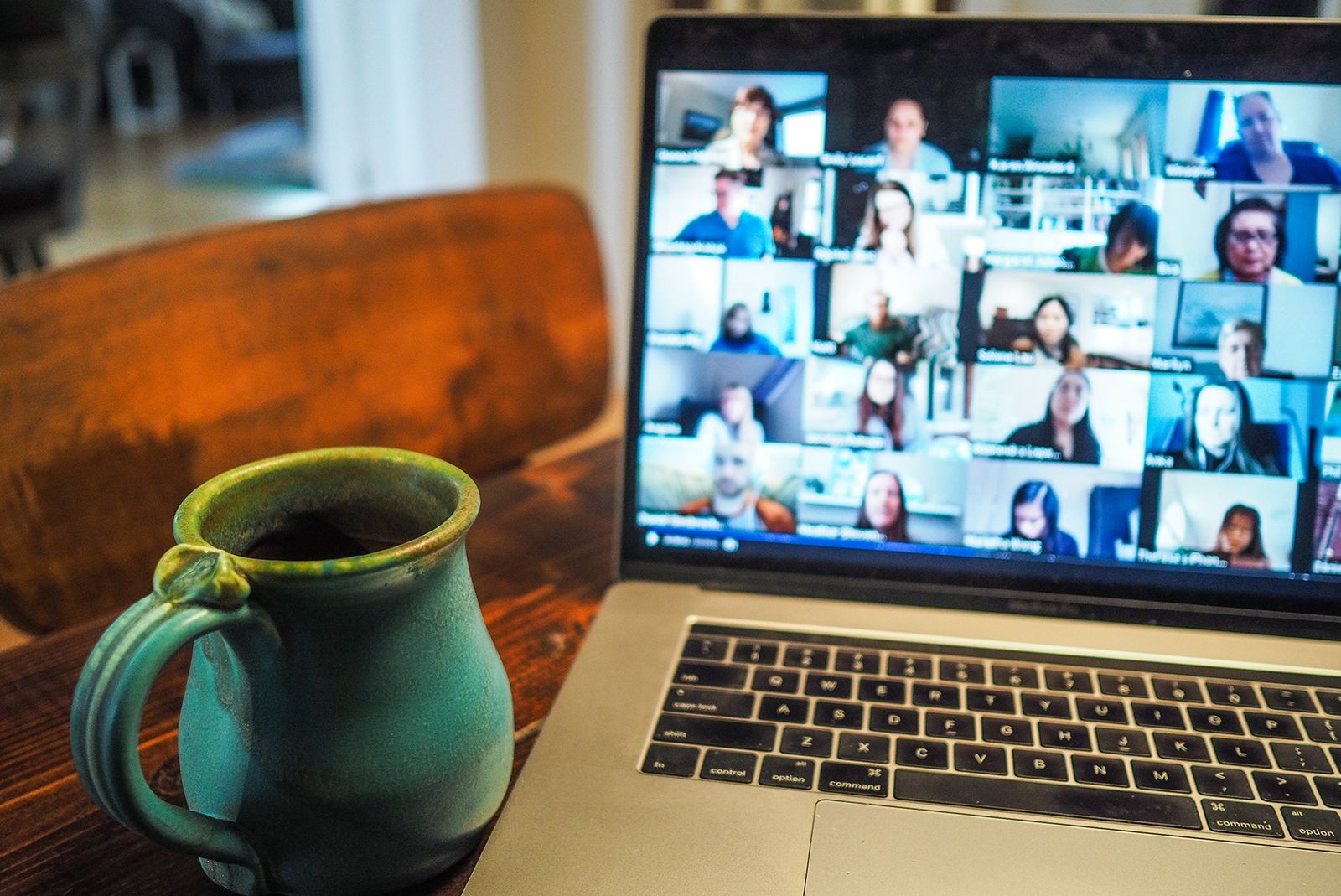
How to use Zoom's Studio Effects filters to change your makeup in video calls
Zoom has a little-known feature that allows you to change your eyebrows, lip colour, and even facial hair using filters.FAQ
Q: Why is mirroring used?
A mirrored image presents the view of yourself that you're used to seeing. You see it every morning when you look in the mirror. When it comes to presenting, it's much easier for you to understand what's going on, giving much more natural results thanks to mirroring.
Without mirroring in your preview window, when you reach left, you'll see yourself reaching right, and that's confusing. You immediately think you're doing it backward because it's not what you expect to see, so you try to correct it. It's a phenomenon that only really arises with video where you can see yourself, which is something we've only been dealing with for a couple of decades.
The important thing to realize is that the people on the other end of the line aren't sitting in your seat; they are effectively sitting opposite you. When you see their view -- the unmirrored view -- it's like an out-of-body experience. It's something you never see, which is why mirroring is used.
Q: Where else does mirroring exist?
Mirroring is very common in selfie cameras. They present a view that you're not accustomed to seeing -- namely, someone looking at you. So, the images you see on a selfie camera are mirrored, not what the camera is actually capturing.
You can test this yourself with the handshake test we mentioned earlier. If you reach out to shake hands with your image, a mirrored image will show both of you raising your hand on the same side, preventing a handshake.
Smartphones usually offer an option to save either the mirrored image you see in the preview or a flipped version, which is what a person standing opposite you would see. This can create confusion with text on clothing, where brands appear backward if you save the mirrored image, a choice many people make.
This situation raises a broader philosophical question about the intended audience of selfies: if you prefer the mirrored version, you're taking them for yourself; if you prefer the flipped image, you're taking them for others. Does this make you a narcissistic selfie-taker?
However, it's best not to overthink this, as it can be quite perplexing. But if you notice your selfies are always "backwards," checking your phone's camera settings might allow you to adjust this and achieve the desired result.

